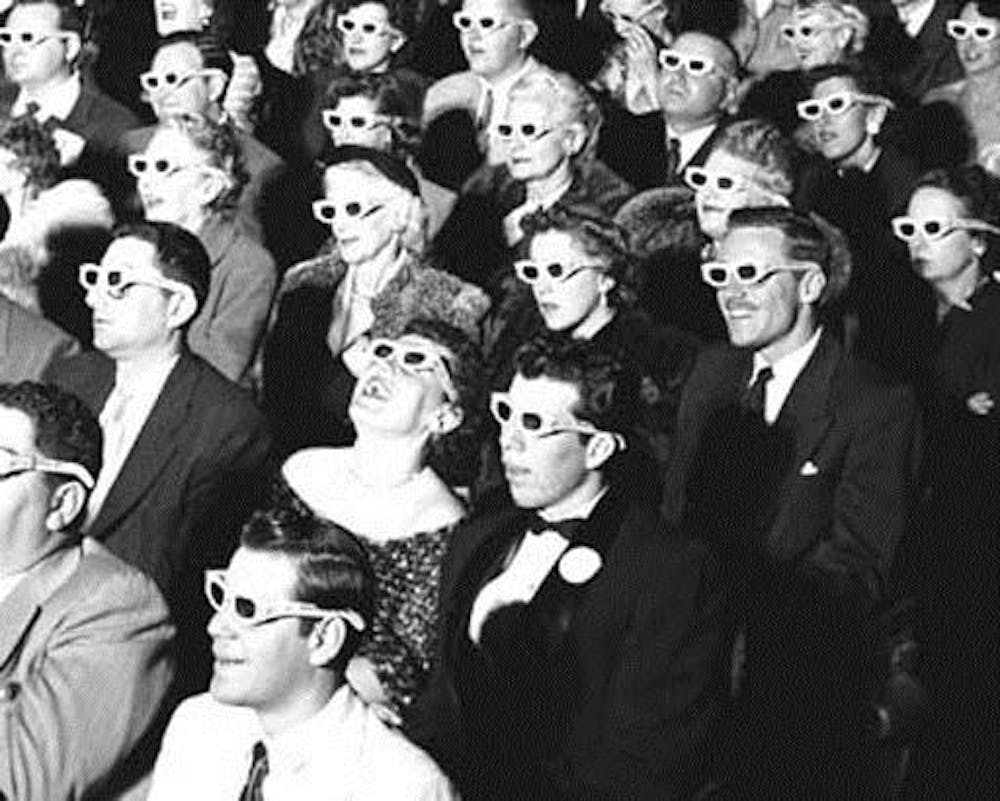With what feels like a stranglehold on Hollywood, the 3-D phenomenon that seems to have started from nothing in the past year is everywhere. But the saga of 3-D is actually more than a century old.
The first concepts of 3-D technology date back to around 1850 with the invention of the Brewster Stereoscope, a device that improved the original stereoscope and could be used for taking 3-D still images, effectively giving the illusion of depth.
Interest in 3-D technology rose exponentially with the invention of the Kinematoscope. This invention expanded upon the stereoscope, making it possible to use 3-D images to create films.
The invention itself was not sufficient enough to catch the attention of the filmmakers of the day. That changed when The Lumiere brothers’ film “L’arrivée d’un train à La Ciotat” had audiences afraid a train was coming straight toward them.
Though interests were high, the technology was too young to produce 3-D films.
By the World War II era, the technology had been converted into 3-D cameras, which were commonly used.
Chris Eller, a 3-D specialist in the Advanced Visualization Lab at IU, even mentioned that, contrary to popular belief, many photos taken during World War II were actually shot in 3-D.
In the 1950s, movie producers regained interest in 3-D technology. The invention of television kept most families in their homes instead of heading to the movie theaters, and 3-D movies became a gimmick to bring them out again.
The plan succeeded, and 3-D entered into its first golden age. Films such as “Bwana Devil,” “Dial M For Murder,” and “Hondo” saw great success due to their three-dimensional appeal. The 1950s produced more than 60 films in 3-D.
Eventually, things would fall out due to technological setbacks, mainly because studios found it too expensive to show these films. Polarized glasses, similar to those used today, were used in 1950s theatres and were simply too expensive to produce.
Playing these films required two projectors to be perfectly in sync so the viewer would see two images on screen. Viewing conditions in theaters were bad, and viewers often complained of eye fatigue.
Due to these issues, 3-D effects faded out of interest by the early 1970s.
Yet in what became 3-D’s second golden era, films such as “Jaws 3-D” and “Friday the 13th Part III” brought interest back to the 3-D gimmick. This time period, from the mid-1970s throughout the 1980s, saw several new innovations.
Stereovision, an invention by Allan Silliphant and Chris Condon, made it possible to show 3-D films in theaters using only one camera rather than perfectly syncing two different ones.
Cardboard 3-D glasses also became popular. They were much cheaper to produce than polarized glasses and allowed viewers see a different image with each eye.
And yet the gimmick still failed to catch on and become a staple in the movie industry.
Audiences simply weren’t blown away by the effects of the time, and 3-D added little to the overall appeal of films.
From the 1990s to today, technology has nearly perfected the crucial aspects of 3-D that will allow it to stick. IMAX theatres capture the interests of many movie-goers. Computer graphics, digital cameras and large format screens all play a role. Technology has finally caught up to the dreams of mankind.
James Cameron produced the first IMAX 3D feature film, “Ghosts of the Abyss,” in 2003. He once again revolutionized the 3-D scene in 2009’s “Avatar.” In 2004, “The Polar Express” saw unprecedented success as the first full length 3-D animated film.
“3-D is definitely the most important and far-reaching innovation we’ve had in this industry in many years,” said Albrecht Gasteiner, founder of the HDTV-Forum in Switzerland, in an interview with Sharp Electronics.
3-D technology’s evolution and ability to come back over the years begs the question whether it is here to stay.
In order for it to become a staple in the movie industry, as surround sound and widescreen have, that trend of growth and artistic potential must continue. Just as movies aren’t made just to show the effects of surround sound, they can’t be made just to exhibit 3-D technology.
As the road continues for this art, it is clear that no end is in sight. We live in the most promising time for entering the third dimension.
The History of 3-D

Get stories like this in your inbox
Subscribe





